7 Ways to Stop Rock and Roll
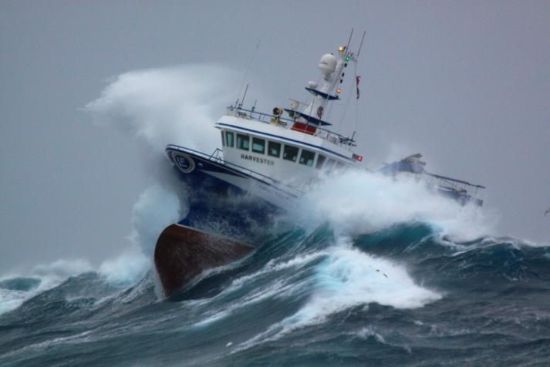
Engineers all over the world are working on making the ride on large yachts more comfortable than ever before. The result is some interesting new products as well as improvements of the old systems. As riding comfort replaces the need for every more speed among the new generation of boaters, we’ll all be hearing more about these systems.
Focusing on Comfort
Today, leisure boats are looking for more comfort. You see this focus in the luxurious interiors and the high-quality furniture on board, but all this luxury and comfort is a bit wasted when the boat is out at sea in lively conditions. Things can become decidedly uncomfortable and unpleasant when loose furniture starts to move around.
Now, we are seeing a new focus on trying to improve the quality of life at sea, with a range of equipment and additions to the hull that can improve the ride comfort.
1. Conventional Stabilizers
Stabilizers have been around for a long time now and these fins sticking out from the side of the hull can do a good job in reducing the rolling. Rolling has always been one of the primary areas of discomfort at sea. These fins, which adjust their angle to create a righting force that is designed to keep the boat as upright as possible, are now a feature on many cruising yachts.
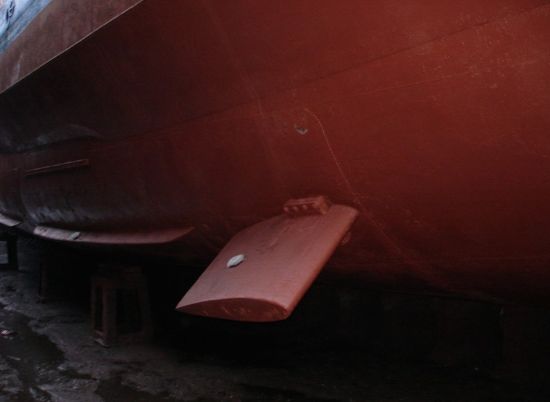
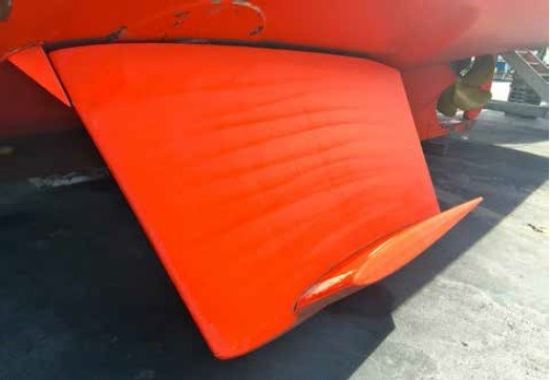
They work well at speeds up to around 30 knots. Above that, the resistance generated by the fins tends to have too much of a negative effect on the performance. Fast boats are less affected by rolling because the movement of the hull through the water produces its stabilizing effect.
Fin stabilizers also work well on displacement hulls. It is on the trawler type of yacht where you can often find the maximum benefit. The only downside is that the rolling movements are replaced with a more jerking type of movement as the stabilizers do their job. The slight jerk is better than rolling to over 20-degrees and having to cling on with your fingernails.
2. Gyro Stabilizers
The main modern option to fin stabilizers is the gyro stabilizer. This has the benefit of working at whatever the speed of the boat is, from zero to full speed. This means that you can have a peaceful night at anchor and lie comfortably in your bed, but you will probably have to keep a generator running to power the gyros.
There are fin stabilizing systems that create a stabilizing effect at zero speed by waggling in response to the hull movements. But again, the power requirements probably mean that you will need the generator all night as well.
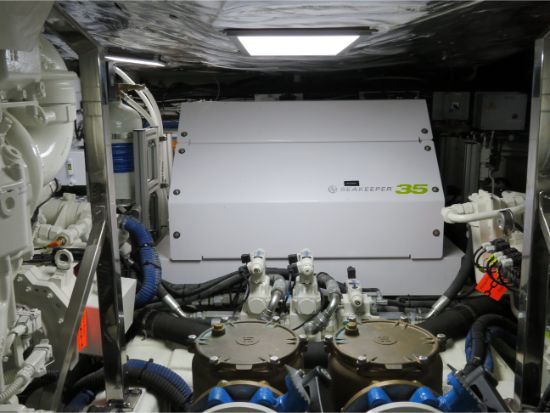
3. Magnus Effect Stabilizer
An interesting alternative is a recent development in the form of The Magnus Effect is that a revolving cylinder can create a side force, which is used to create the forces required to counter the rolling by changing the direction of rotation. The cylinder has to be powered to make it revolve. They do seem to be effective, although their use tends to be limited to slower craft because of the increased resistance of the cylinder sticking out from the boat’s side.
They are hinged so they can be swung in when alongside and interesting development for fast craft is to have them mounted under the transom like an alternative flap system. Here they can stick out from the hull at slower speeds and then be folded into the transom for higher speed operations.
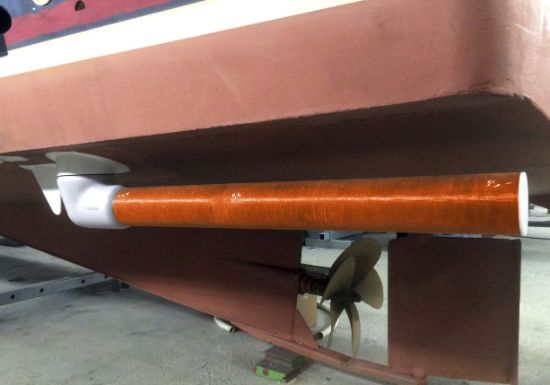
This type of stabilizer is designed to reduce the rolling. On planing boats, it can be the pitching that creates the most discomfort and which can be the limiting factor to the speed. The pitching into a head sea can be controlled to a limited extent by using the flaps to adjust the trim. Keeping the bow down can be a useful technique to reduce pitching.
A bulbous bow can also be help on displacement hulls to dampen out the pitching movements, so long as it is on a boat long enough to make use of this design.
4. Interceptors
The world of boat control changed when the Swedish company Humphree introduced fast-acting interceptors. Interceptors are a vertical plate attached to the transom that can be moved up and down.
More effective. When protruding below the bottom of the boat by just an inch or so, they create lift at the stern in the same way as flaps, but they are much more effective. With the fast-acting Humphree interceptors these could be moved up or down to control the pitching in real-time. With input from sensors, the signal was sent to the interceptor motors and a correcting force is applied by the interceptors to counteract the pitching.
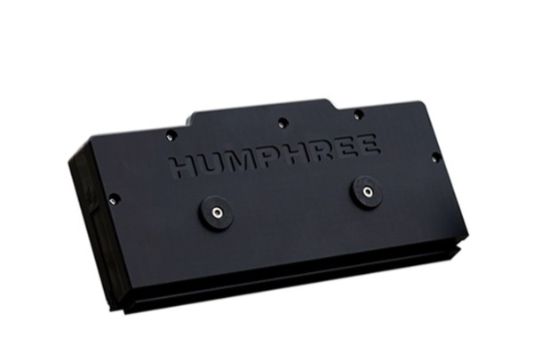
Roll Be Gone. Just like how fin stabilizers can correct the rolling, these fast-acting interceptors also control rolling. With the automatic pitch control switched on, speeds of 5 knots faster than when running without them have been reported, along with a great reduction in rolling.
Big Difference. Veteran offshore pilot and marine journalist, Dag Pike says that the Humphree interceptor system is “like a magic carpet ride and for anyone who has to operate a planing boat in adverse conditions. I would suggest that this system would be a must.”
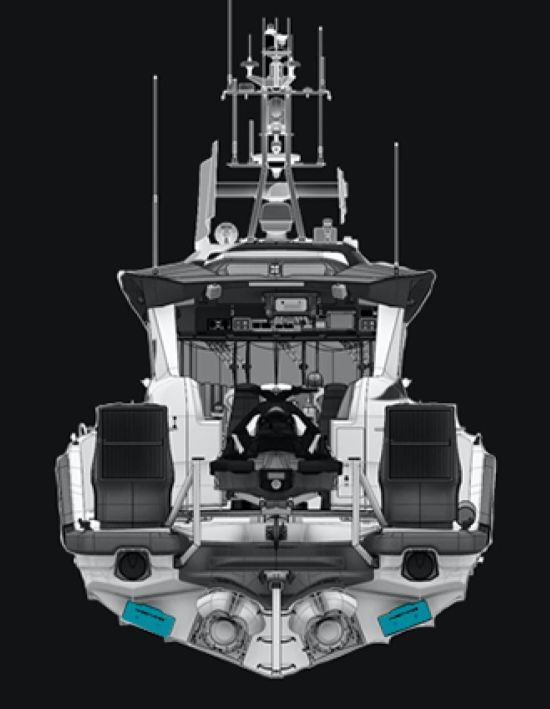
All-in-One Control
Humphree, which is part-owned by the Volvo Penta Group, is not alone in exploiting the virtues of the fast-acting interceptors and other companies are offering similar systems although the Humphree system is well patented, and more robust than other units on the market, by any measure.
5. New 8-Axis Humphree Stabilizer
After Humphree developed a range of advanced fin stabilizers, they have now combined fins and interceptors in what it claims will be a “game-changing” package where roll, pitch, and yaw movements are all controlled by the one system.
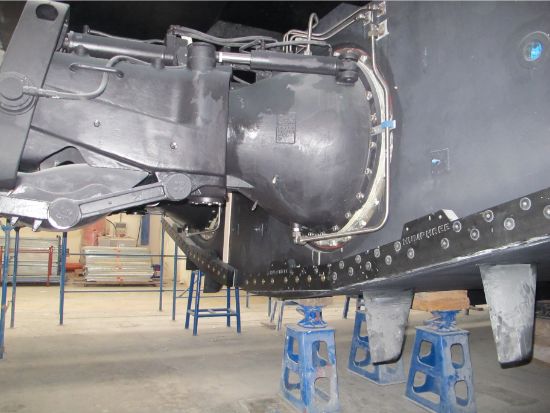
No generator needed. This new system operates on 24 volts DC so that it is not necessary to have a generator running for its operation. The system is designed to be effective in controlling vessel motions at all speeds and to be effective when the vessel is at anchor or stopped in the water. It operates fully automatically to give a dramatic reduction in vessel motions and also incorporates the Humphree Coordinated Turn function to give greater onboard comfort and control when turning.
This all-speed stabilization system is a development of the catamaran stabilization system that was introduced by Humphree using a series of control fins attached to the two hulls. The new system for monohulls combines fins and interceptors rather than just fins and it promises a new world or comfort at sea and it can be installed on most planing boats over 35 feet in length.
6. Pitch Stabilizer -- The Hull Vane
The Hull Vane was developed by Dutch naval architect Piet van Oossanen back in 2014 and has been fitted to over 20 vessels so far with a 50% split going to leisure vessels and the other half being fitted to offshore patrol vessels.
The Hull Vane is a fixed transverse aerofoil that is attached to the transom of mainly semi-displacement hulls like the Downeaster style where it serves to improve the efficiency of the hull by adjusting the trim, resulting in improved performance and/or reduced fuel consumption as well a providing a more level ride.
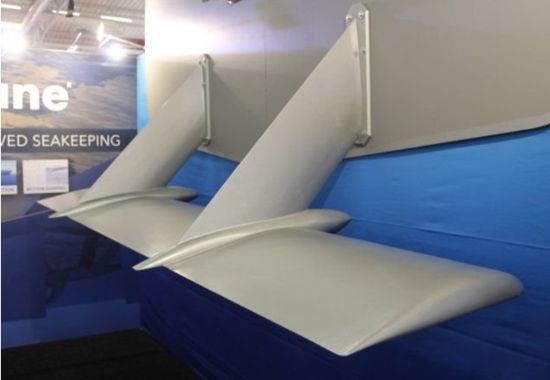
The company has developed the Dynamic Hull Vane which is claimed to be able to act as a pitch stabilizer. A pitch stabilizer is a new development that should be a considerable benefit to boats that have to operate in challenging sea conditions.
To act as a pitch stabilizer the Hull Vane has to be capable of varying its angle in very quick time to respond to the hull pitch changes caused by head seas. To achieve this, Hull Vane has teamed up with Naiad Dynamics, a company that produces roll stabilizers and thrusters and has experience in fin control systems.
It is anticipated that the resulting Dynamic Hull Vane will not only dampen out the pitching movements of semi-displacement hulls but will also allow the hull to operate at a more efficient trim angle to match the prevailing conditions. Combined with Naiad’s experience with fin stabilizers there could be a full motion control system on the horizon.
7. Foils
Perhaps a simpler way of reducing vessel motions is to have the hull riding out of the water on foils. There are many production boats now fitted with foils primarily to reduce the resistance and so allow high speeds.
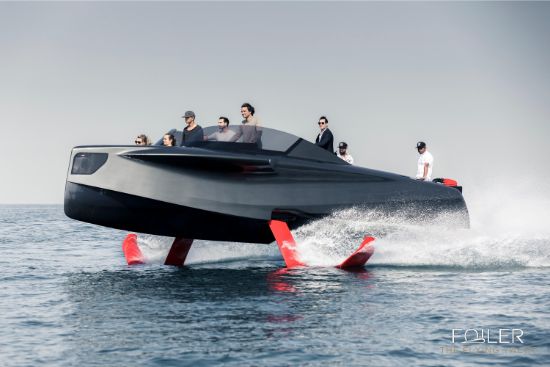
Foils are less affected by waves than the hull of the boat itself and so the hull motions are reduced when raised on foils with the hull riding above the waves. This works up to a point but when the waves get bigger to the point when they start to impact the hull then it becomes time to drop off the foils and then, of course, the boat behaves like a normal monohull.
Having the ride controlled by fins, foils and interceptors can give a much more comfortable ride but because the boat’s movements are being controlled to counteract the waves the hull can generate a lot more spray, so one of the penalties of active ride control can be a very wet boat. Then it becomes a question of designing the hull to control this spray.
In boat design nothing is simple and the chances of getting something for nothing are small, but development continues. Of course, the best was to reduce the pitching and rolling is very simple. Don’t go to sea in adverse conditions.